Today baby boomers and seasoned FM pros are retiring at a hasty clip. According to IFMA Foundation’s Global Workforce Initiative (GWI), more than 50% of FMs will retire over the next decade or so. The change is having a dramatic impact on companies who are racing to curate decades of valuable knowledge and experience before it turns its focus to the golf course.
Sadly, most employees feel disconnected when it comes to knowledge transfer and sharing at work. According to a Gallup poll, only about a third of employees in the U.S., France, Germany, Spain and the U.K. strongly agree with the statement “In my company we openly share information, knowledge and ideas with each other.”
Clearly, there’s a knowledge gap that needs filling, and smart firms aren’t waiting for the inevitable resource hit from the “Great Retirement” to put them at a disadvantage. Instead, they’re building knowledge transfer plans well before the gold watches are given out. But what are the key elements of a knowledge transfer? How can you make the most of a retiree’s last six months? To answer these questions, we asked seasoned pros to give us some guidance.
Target Explicit and Implicit Knowledge
To start, focus the bulk of your efforts on capturing the two key types of knowledge for most businesses: explicit and implicit knowledge. Here’s a oversimplified definition of both:
- Explicit knowledge (EK)—Objective info that is easily codified, communicated, shared and stored. EK contains objective facts and data and is sometimes referred to as “know-what,” as in you know what the information is.
- Implicit knowledge (IK)—Subjective info that is hard to codify, communicate and share. IK tends to be subjective, context-specific and based on individual experience. IK is often referred to as tacit knowledge or “know-how”, as in you know how to do something.
Too often, firms make explicit knowledge capture the priority. With good reason—it’s the easiest, low-hanging fruit of knowledge. For example, before your building engineer leaves, you have him or her update the maintenance schedule. It’s a clear cut transaction where critical information is recorded and stored within your database.
But that same engineer’s brain also houses other tidbits of precious knowledge collected over the years. These gems of implicit knowledge could be an un-documemented energy-saving hack for your cooling plant, or a personalised way of handling an particularly obstinate vendor. Both pieces of knowledge are valuable to your company, and both will vanish with the employee, unless you capture them first.

Knowledge Management Systems
Effective knowledge capture requires a “knowledge management system” or KMS for recording, storing and sharing info and processes. But don’t let the term intimidate you. Yes, there are plenty of paid KMS platforms with loads of bells and whistles, but an effective “system” could be a simple Google doc. Corporate wikis like Confluence are popular platforms for curating information, and if you already have Office 365, Microsoft Teams lets you add a wiki app. The sophistication of your KMS will depend on the size of your company and the amount of info you want to curate.
Accessibility
Regardless of the KMS, it should be centralised and accessible. All staff need access to documentation applicable to their department. Otherwise, you construct roadblocks to both access and contribution. Also, run a single system. Using different tools across teams erects barriers and creates potential software conflicts.
“Accessibility is super important,” explains project management expert, Dan LeFebvre. “Certainly, the type of documentation an accounting team needs is different from what another team might need. But if all information is in the same place, and you can control who has access, then at least it’s consistent. You’re telling everyone, no matter who you are, this is where you go to access all of the information we have at the company.”
LeFebvre suggests assigning one person to manage your KMS. One point of contact makes it easier to ensure consistency and facilitate documentation.
Easy Contribution
Even if you have the world’s best KMS, you still have to motivate your retiring employees to contribute, especially those eyeing the exits. “The real challenge is often not the tool itself, it’s simply getting people to document their processes and knowledge,” explains LeFebvre.
Hesitancy can stem from lack of interest. “It’s extra work,” says LeFebvre. “And nobody likes extra work.” But, he admits, it’s often the case that some seasoned workers simply don’t know where to begin:
“It’s difficult to explain something you’ve learned over twenty years. If someone’s been at a company for a long time, they often don’t think about the process. They just do it. What they think is one step, may actually be fifty steps for someone who doesn’t understand the process.”
Cross-Training Staff
There are many benefits to be had by training employees to do different jobs within the company. Spreading knowledge and skills among team members staves off burnout and improves collaboration across the organisation. More importantly, it helps build a company’s resilience during retirements and high turnover.
Steve West—a former GM at Auckland Unlimited—uses cross-training to build flexibility into his organisations. “I’ve always tried to have a flexible workforce, where there’s a transfer of knowledge, so everything isn’t stored in one person’s head.”
Measure Knowledge Transfer
Like any effective manager, West understands the power of measuring a problem. He is currently developing an information management system or “resource matrix” that measures and records the knowledge and experience of his staff for cross-training purposes. “I use it to locate who has full knowledge, who has some knowledge, and who has no knowledge. Then we start to rotate employees through different venues. It’s helped us work towards building some flexibility so that knowledge is shared across all resources.”
Getting Staff Buy-In
Cross-training can be a tough sell to those who don’t like getting out of their comfort zone. To win over recalcitrant staff, West suggests practicing simple communication and encouraging employee contribution. “I even ask my staff to contribute to their own knowledge appraisal. I may have got my appraisal wrong. Maybe she’s got more knowledge on this value than I thought she did.”
“At the end of the day, it’s about simple communication: Here’s what I want to do. Here’s why it’s an unacceptable risk to the business. Do you agree or disagree? Generally speaking, if you persuade with logic, most people will probably get on board. They might not always like getting out of their comfort zone, but if you sell it in terms of its power of affecting their professional development, they’ll buy into it.”

Knowledge Transfer Via Mentorships
Pairing up retiring staff members with in-house or new employees is an effective way to transmit elusive implicit knowledge. Mentees get a chance to shadow and learn first-hand from older workers, plus they gain opportunities to form instant personal and professional connections with other staff members, which can help the on-boarding process.
West’s organisation uses mentorships and has seen huge success pairing experienced employees with new comers. But he cautions managers to not limit their experiences to a mentorship, and he ensures effective knowledge transfer by shifting his mentees from one venue to another.
“You can’t keep them bored too long either. Mentees need development in other areas too. It’s no good placing someone with a mentor and leaving him there and waiting to see what happens for the next few years. You’ve still gotta keep them interested and engaged in the business.”
Mentorships are also a valuable opportunity to build a culture of knowledge transfer throughout your organisation. LeFebvre advises businesses to make documentation a part of the company culture. “Make it a normal part of the process to dump knowledge as employees think of it. During a mentorship, for example, the mentor may at some point think: Oh, I completely forgot about this part of the process. You want their next thought to be: I better write this down’.”

